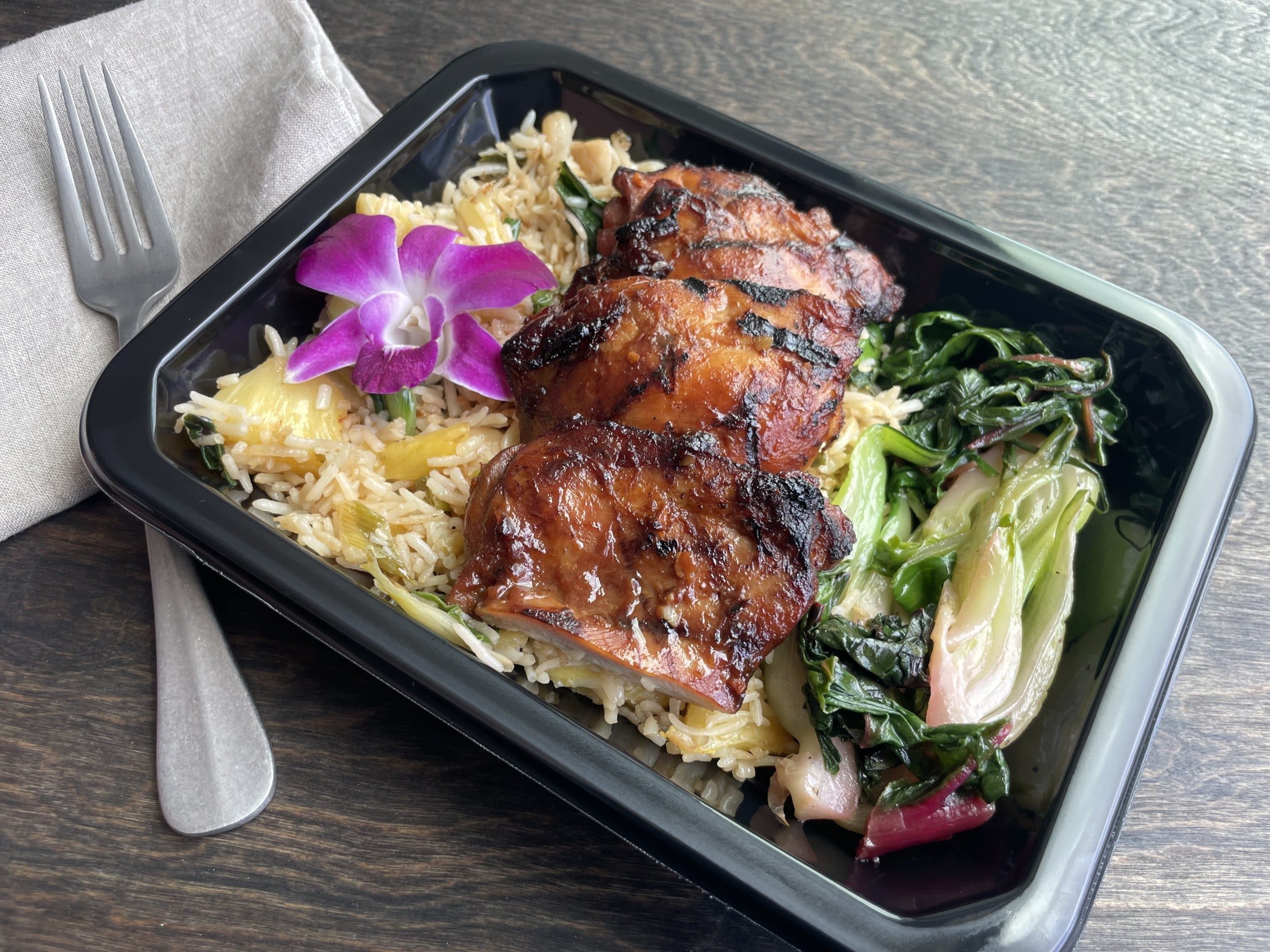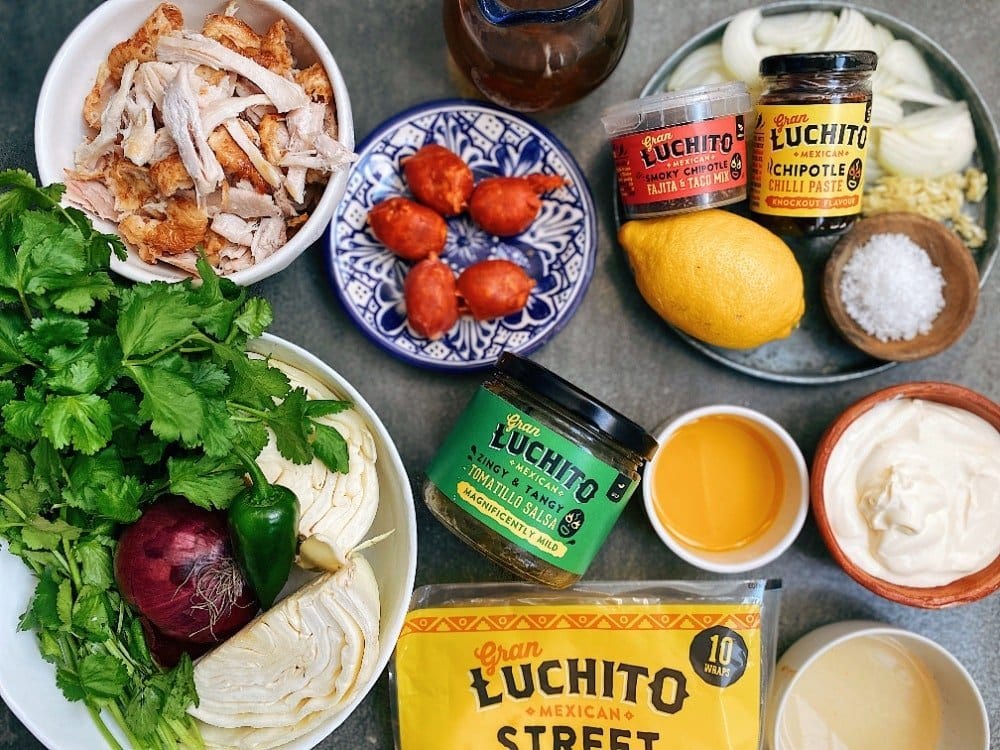
Take your tastebuds on a Hawaiian Vacation
Summer just got here, and this heat already has us dreaming of a sweet island getaway. That’s why this month we turned to the beautiful
Cart
No products in the cart.
NEW YEAR SALE ENDS IN
Spend $130, Save $15. Spend $170, Save $20. Spend $200, Save $30.
Beef Stroganoff (Stroganov) is simple, comforting Russian cuisine, comprising sauteed pieces of beef served in a sour cream sauce. It dates back to the mid 19th century and is named after a member of the Stroganov family, a group of highly successful Russian merchants and landowners. Unlike the French, who often named dishes after the chefs who devised them, the Russians traditionally attached the names of famous households to their cuisine. This was because the cooks were usually serfs. In other words, they were agricultural laborers of peasant class without social status. Count Pavel Stroganov was a celebrity in turn-of-the-century St. Petersburg, a dignitary at the court of Alexander III, a member of the Imperial Academy of Arts, and a gourmet. Allegedly, Count Pavel’s love of entertaining ‘popularized’ Beef Stroganov, which had actually appeared as a recipe some years earlier. Let’s review some examples and characteristics of Russian Cuisine.
It is almost impossible to generalize what typifies traditional Russian cuisine. A vast country full of different climates and dozens of diverse cultures, food in Russia varies greatly from region to region. On the other hand, certain dishes are typical throughout much of the country, although the recipes may differ. What does bind Russia’s cuisine together is its rich history and four culinary pillars.
Traditional Russian dishes uses a lot of grains, berries, vegetables, flour and fish. These are all products that were common in the houses of even the poorest people. In bygone days, meat dishes were common for holidays, and these dishes were true culinary masterpieces: Ducks with apples, whole roast pigs, or fried swans (popular with wealthy families).
With the arrival of Christianity, Russian food split into two types: fasting and non-fasting. Almost seven months of the year were devoted to some sort of fast, which usually meant limiting meat. Russian housewives had an arsenal of soups, porridges, and baked goods that they could always prepare, so even during fasts, there was plenty to eat. Access to certain common food groups coupled with constraints imposed by fasting gave rise to four pillars of Russian cuisine.
An abundance of vegetables is one of the distinctive features of Russian cuisine. Pickled and preserved to supply vitamins for long winters, they are cheap and easy to grow. Preferred varieties are those suitable for long term storage such as onion, cabbage, carrot, turnips, and radish. Peter I added potatoes to the pile at the beginning of the 18th century. Vegetables make the base of rich and nourishing soups and spicy appetizers and are great additions to meat and poultry dishes.

Russian rivers and lakes have always been teeming with fish (perch, roach, pike, ruff, sturgeon); hence fish has an important place on the menu. In addition, fishing occurs year-round, including wintertime (the famous “subglacial fishing”), providing rich and nourishing fish dishes. Russian cuisine contains a vast number of different fish soups, roasts and stews as well as bakes.
“Bread is the staff of life”, according to an old Russian proverb. No meal either at a rich or a poor house can do without bread in Russia. There are many kinds of bread with considerably different flavors. Baking has always been a distinctive feature of Russian holiday feasts and accompanies many religious and ritual celebrations.
Grains in Russia are not only for making bread but also porridge. Hot and rich Russian porridges use a variety of cereals (barley, wheat, buckwheat, semolina), each of which has its own unique taste. Porridge becomes even tastier in Russia with various additives: Not only sweet berries but also savory mushrooms, stewed meat, chicken, and roasted onions.
The history of Russian cuisine stretches back more than a thousand years. During this time, Russian cuisine has changed several times, adding new dishes and ingredients from other countries, and new religious dishes and meanings.
Advantour (tour operator on the ancient Silk Road) explains how the history of Russian cuisine can be divided into four main eras:
Preserved foods were a large part of Russian cuisine. Since cold weather could be in some places for nine months out of the year, households would preserve as much food as possible to last through the winters. For example, this included salting, smoking, soaking, and fermenting products. Soaked and fermented cabbage could be used to make shchi (cabbage soup) or could be used as a filling for pierogies (stuffed dumplings). Soaked apples were served to guests or used as side dishes. Pickled cucumbers were a main ingredient in a lot of dishes, including several traditional soups. Salted and dried meat and fish were eaten after fasts.
The foundation of all Russian cuisine, simple baked staples involving bread, grains and starches dominated this era. Women would bake pancakes and rye pies for Maslenitsa (Shrovetide) and kurniks (a dome shaped pies) for weddings. The pies featured everything from fish, meat and poultry to mushrooms, berries and cheese.

Loaves of bread were central to every feast. Kasha (rice, wheat, millet, buckwheat or quinoa boiled with water) was symbolic of affluence. Vegetables such as cabbage, turnip, radish, peas, and cucumbers came raw or salted, steamed, boiled or baked. Milk and meat were not popular until the 17th Century while honey and berries were the basis for syrups, preserves and pryanik (gingerbread), a Russian national dessert. In the beginning of the 16th – 17th centuries Russian cuisine welcomed “Oriental” dishes such as noodles and pelmeni (dumplings) borrowed from Asian cuisines that later became traditionally Russian.

Tula pryanik is a famous type of imprinted Russian pryanik from the city of Tula. Usually, Tula pryanik looks like a rectangular tile or a flat figure. Making stamped pryanik is an art form. The imprints could include different patterns, symbols, images of the Tula Kremlin, names or a congratulatory message.
Up until the 17th century Russian cuisine among the nobles and the commoners was much the same, other than in quantity. After that, Russian nobility introduced a number of foreign meals and culinary techniques. Noblemen enjoyed roast meat, poultry and game. Beef was used for corned beef, pork was turned into roasted ham, fried or stewed and mutton, poultry and game were put into hotpot. Many of today’s Russian soups originated in the 17th century. For example, solyanka or rassolnik (containing beef, barley and pickled cucumbers). It was in this period that such well-known delicacies as black caviar, salted and jellied fish appeared.

Solyanka (also spelled soljanka), which comes from the Russian word for “salt,” is a hearty, thick soup with salty cured meats, sausages, olives, capers, pickles, cabbage, sometimes carrots, and dill and sour cream for garnish. It is accompanied, of course, by whole-grain bread.
In the 16th century Russia annexed Kazan and Astrakhan Khanates along with Bashkiria and Siberia. New people added to Russian cuisine new food products such as raisins (grapes), dried apricots, figs, melons, watermelons, lemons and tea. The variety of desserts expanded thanks various cookies, sweet pies, candied fruit, apple marshmallow sticks, numerous jams. The 17th century marks the most sophisticated development of Russian cuisine. Peasant food on the contrary was getting more and more simple and unpretentious.

Pelmeni are dumplings of Russian cuisine that consist of a filling wrapped in thin, unleavened dough. The debate about the exact place of origin is still active, with Ural and Siberia both maintaining strong claims. Pelmeni are reputedly “the heart of Russian cuisine.
From the time of Peter the Great, Russian nobility borrowed West European culinary customs and traditions. To illustrate, rich nobles, who visited Western Europe, brought with them foreign chefs. It was at this time that minced meat first featured in Russian cuisine. Chops, casserole, pates and rolls became quite popular along with Swedish, German and French dairy and vegetable soups. It followed that foreign chefs integrated their national favorite food into Russian cuisine. At this time, German sandwiches, butter, French and Dutch cheeses made an appearance.

Königsberger Klopse is a savory meal consisting of meatballs in a white sauce with a side of boiled potatoes and sliced pickled beets. Similar dishes existed since the Middle Ages, but klopse (meatballs) first debuted in Königsberg (now known as Kaliningrad) in the 18th century. These meatballs mostly comprise minced veal and a small amount of either anchovies, sardines, or herrings, which are contrast nicely with capers in the white sauce.

Russian golubtsy are cabbage rolls containing ground beef and either rice or buckwheat. However, cabbage stuffed with any ingredient is the only necessary component for the dish to earn the name golubtsy. The name of the dish means little pigeons, referring to the 18th-century aristocratic practice of grilling doves. The poor people couldn’t afford it, so they started cooking fake doves, or golubtsy. This dish is traditionally accompanied by a dollop or two of sour cream on the side.
The peculiarity of St. Petersburg cuisine is due to the city’s capital status and its proximity to Europe. Through the “Window on Europe” cut by Peter I, Russia imported French, German, Dutch and Italian dishes. Among those were various chunks of meat (lamb and pork) with bones, natural beefsteaks, escalopes and entrecotes.
Veal Orloff is a traditional Russian dish originating from the 19th century. It consists of thinly sliced veal filled with pureed onions and mushrooms. The combination of these ingredients is topped with Mornay sauce and baked in an oven until it develops a golden-brown color. It is believed that veal Orloff was invented by a French chef named Urbain Dubois, who was working for Prince Orloff at the time.

Foreign (mostly French) brought potatoes to Russia in 1770s, and tomatoes (19th century) for side dishes. They brought sausages, omelets and compotes unheard of previously. Later, the French started paying attention to the presentation of each dish. Finally, they introduced food mixes such as salads and garnishes which were new to the Russian audience.

Beef Stroganoff
PhotoCredit: TasteAtlas
When it first appeared in mid-19th-century Russia, beef Stroganoff was a dish using lightly floured beef cubes sautéed and cooked in a simple sauce of stock and mustard with only a small amount of sour cream. Although Russian in origin, the French style of cooking strongly influences it —this is evident in the way the beef is cut, in either cubes or strips. Since the recipe was first published in 1871, the dish has had major alterations. The beef is still cut in strips, but the sauce is much richer; with sliced mushrooms and onions that are cooked with beef stock and thickened with sour cream that is only stirred in at the end. The dish pairs well with either rice pilav, egg noodles, or potato fries.
Soon, EatFlavorly will be introducing our version of Beef Strogonoff. Look out for the email in your inbox and in the mean time let us entice you with a world of global flavors delivered directly to your door!

https://www.advantour.com/russia/cuisine/history.htm.
https://www.tasteatlas.com/most-popular-meat-dishes-in-russia.
https://www.bonappetit.com/entertaining-style/trends-news/article/origin-of-beef-stroganoff.
https://www.facebook.com/letoile.cville/posts/beef-stroganoff-the-origin-and-history-of-beef-stroganoff-is-an-excellent-lesson/407939952707873/.
https://www.grainews.ca/farm-life/beef-stroganoff-history-a-mix-of-fact-and-fancy/.
https://digitalgallery.bgsu.edu/student/exhibits/show/understanding-immigration–glo/welcome-to-ohio–welcome-2-eur/in-corporating-culture–europe/beef_stroganoff.
https://www.curiouscuisiniere.com/beef-stroganoff/https://bibimbites.com/stories/beef-stroganoff-the-recipe-and-the-history/.
https://www.themoscowtimes.com/2019/02/20/the-definitive-beef-stroganov-a64566.
https://www.expresstorussia.com/experience-russia/the-history-of-russian-cuisine.html.
http://russia.com/activity/russian-food/.
http://www.ruscuisine.com/.
https://www.56thparallel.com/traditional-russian-food/.
https://www.tripsavvy.com/traditional-russian-foods-4173498https://www.foodrepublic.com/2012/04/19/how-to-eat-like-a-russian-tsar-in-the-usa/.
https://www.justgorussia.co.uk/en/cuisine.html.
http://www.alexanderpalace.org/palace/tsartable.html.
https://www.csmonitor.com/1995/0316/16141.html.

Summer just got here, and this heat already has us dreaming of a sweet island getaway. That’s why this month we turned to the beautiful

Check out how EatFlavorly utilizes Mexican meats and so many more in our scratch-made meals over at Our Menu! With Cinco de Mayo

National Earth day is approaching on Thursday April 22nd. Today, not only is Earth Day a day meant to increase awareness of environmental problems, but
The convenience of home meal delivery is undeniable. Getting food delivered to your door that does not require cooking or cleaning is a huge time-saver.